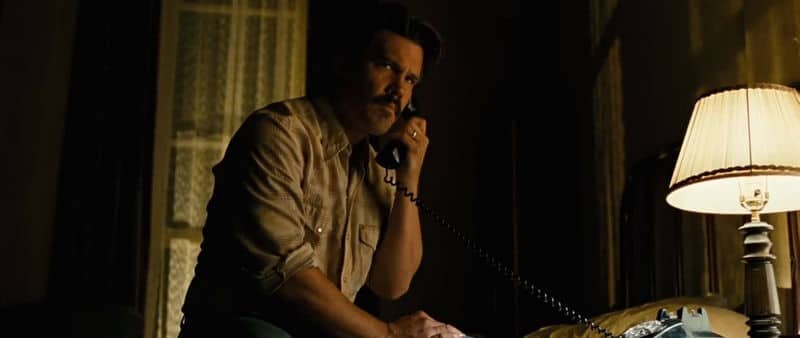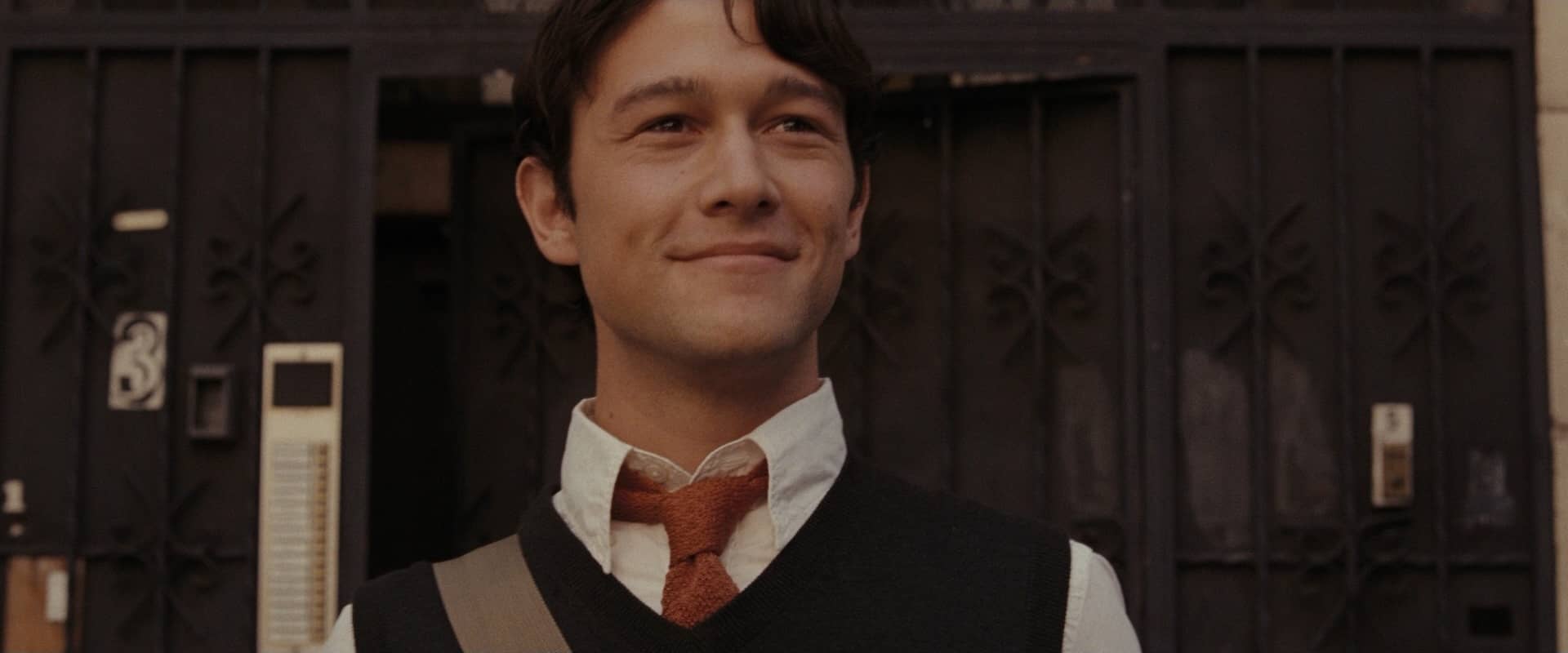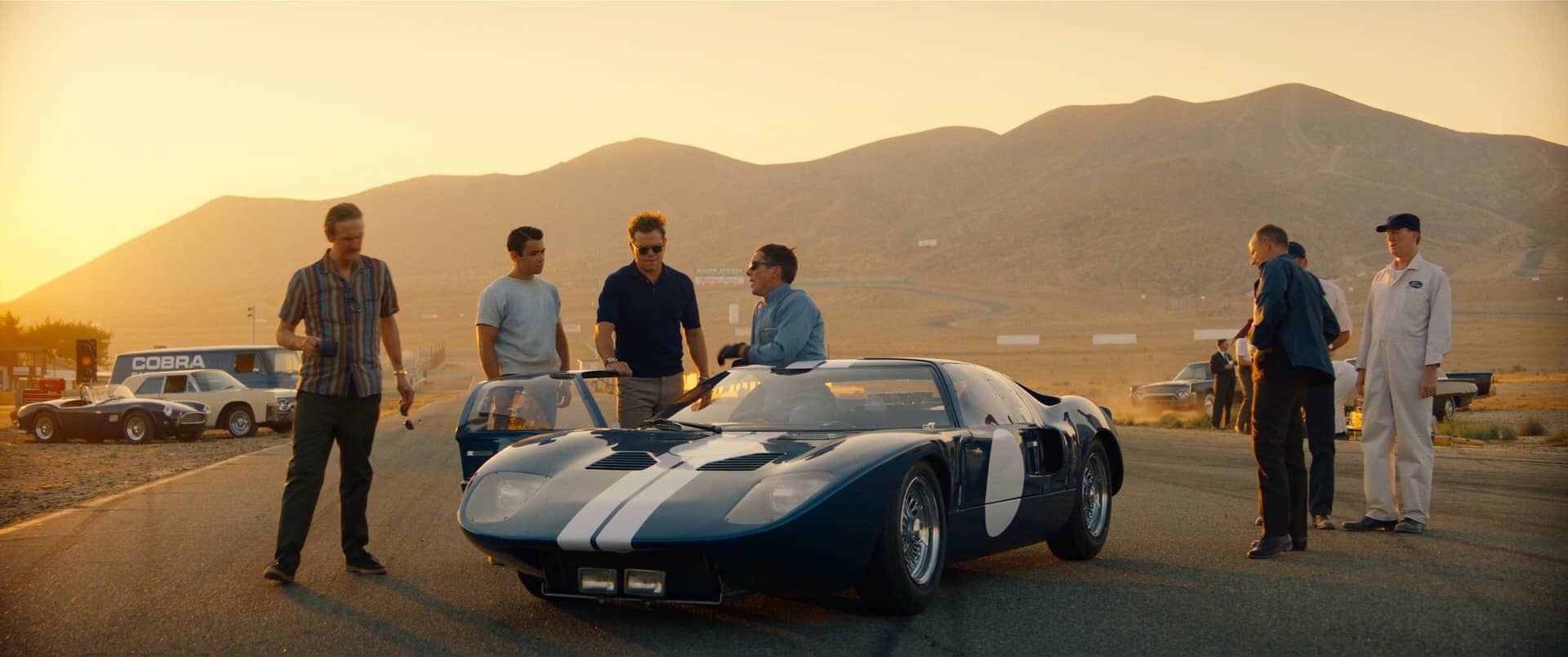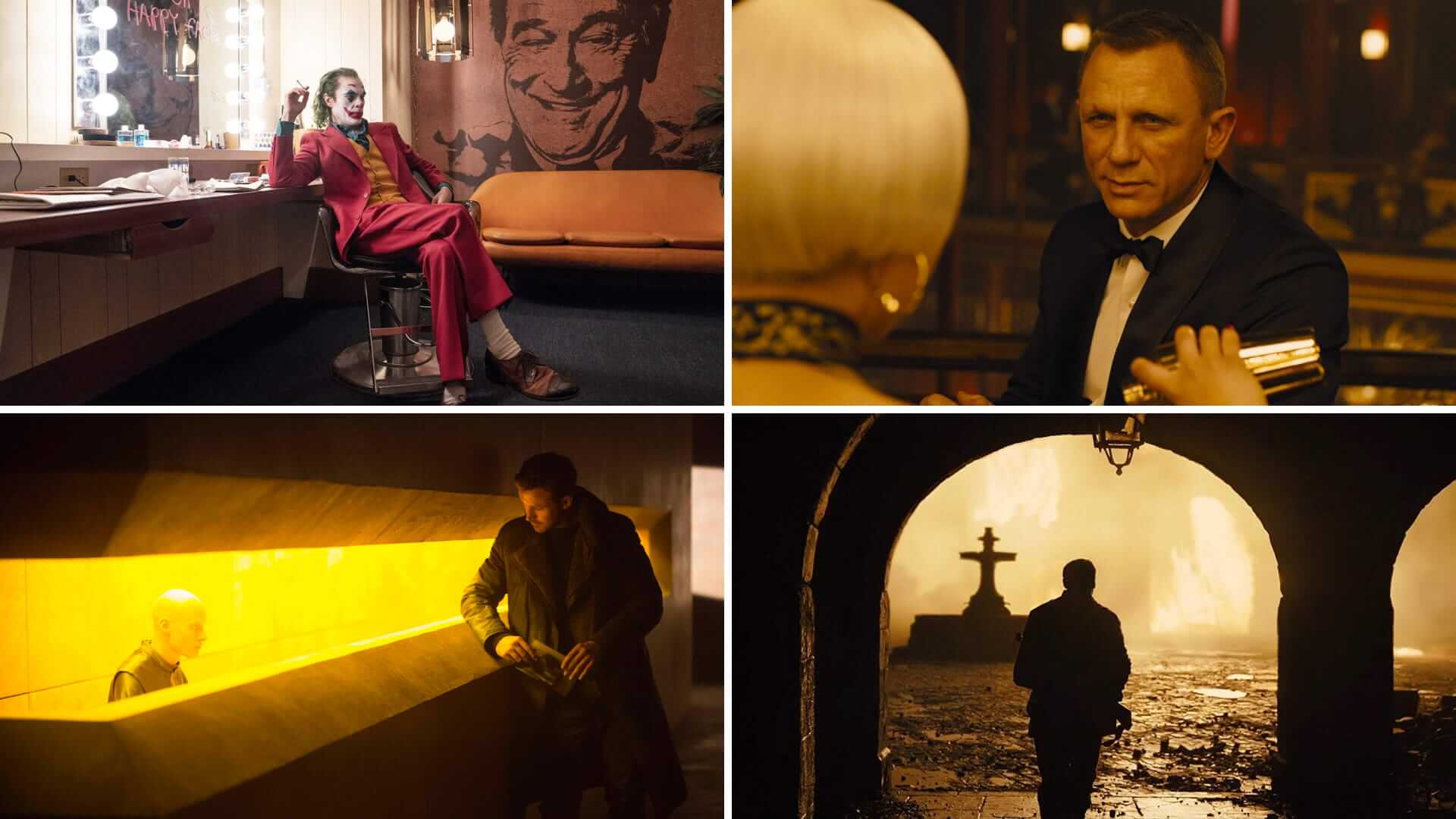Lighting is a key element to the mood of any film. It can be the difference between a happy and cheerful scene or a mysterious and ominous scene. One of the most important lights in any lighting setup is the key light. The key light has a heavy influence on how a shot looks and feels. Let’s take a deep dive into the techniques cinematographers use with a key light to achieve unique visuals and create compelling worlds.
Key Light Definition
First, let’s define key light
Although it is important to understand other lights such as fill lights and practical lights, the key light definition is the most fundamental lighting term a cinematographer should know.
Before we define the different effects of lighting, it is important to first define key light. This light can be found in any lighting setup no matter how bright or how dark or where a scene is shot. A solid understanding of the key light definition is a prerequisite to manipulating light to achieve different moods.
KEY LIGHT DEFINITION
What is key light?
Key light is the primary light source for your scene. The strength, color, and angle of your key light is a determining factor to a cinematographer’s lighting design. The key light is most often placed in front of your subject, at an angle, and thus illuminates one section of your subject. Whether or not the scene utilizes low-key, medium-key, or high-key lighting is based on the use of fill lights to expose a subject’s shadow side or side not exposed by the key light.
Methods to Manipulate a Key Light:
- Diffuse the light for softer lighting
- Bounce the light off a wall or bounce board to create a softer light spread
- Moving the light further from a subject will create harsh shadows
- Adjust the angle of the light to achieve different looks
What is Key Light in Photography?
What is the purpose of a key light?
The key light works as the main source of exposure for a cinematographer. Key light photography is critical to properly exposing and highlighting the shapes, dimensions, and forms of a subject and atmosphere that appear on screen.
How a gaffer or cinematographer chooses to manipulate or complement this primary light will determine the overall mood of a shot.
There are various film lighting techniques within key light photography that cinematographers utilize to achieve different looks. Commonly, a key light is used in a three-point lighting setup to create cinematic looks.

Three-point lighting setup
In this video, we break down how a key light is used with a fill light and back light to create a cinematic three-point lighting setup.
Key Light vs Fill Light • Subscribe on YouTube
The three-point lighting setup is one of the most fundamental lighting techniques to learn. It utilizes key light photography in relation to a fill light and backlight. Understanding the relationship between the three and how to tweak your setup will enable you to create different moods.
The three-point lighting setup, however, is not the only setup cinematographers may use. In addition to the foundational elements of a three-point lighting setup covered in the video, the best cinematographers manipulate other components for different effects.
Some of these components that can be tweaked are the light's color temperature, the angle of the light, the distance of the light from the subject, diffusion of the light, or strength of the light in a set up.
What kind of lighting styles do DPs create from tweaking these elements? Let’s analyze a few fundamental styles that can be found throughout cinema.
Lighting for Drama and Thrillers
Low-key lighting
Low-key lighting relies on harsh shadows and high contrast, otherwise known as chiaroscuro lighting. In this setup, shadows and deep blacks are more predominant than mid-tones and transitions between highlights and shadows are harsh. For more, watch our video on this lighting style.
Chiaroscuro Lighting in Film • Subscribe on YouTube
A great example of this can be found in No Country for Old Men. The screenplay for No Country for Old Men is dramatic and suspenseful which had to be brought out through the film’s cinematography.
Notice how much of the frame is composed of dark tones and shadows. The high contrast is also a key characteristic of low-key lighting.

What is Key Light • No Country for Old Men
Typically in a low-key lighting setup, a cinematographer utilizes little to no fill light at all. If a fill light is used to create a bit more depth and dimension, the key light vs fill light falls somewhere around 8:1 in favor of the key.
This results in hard lighting with harsh shadows. This video breaks down the elements of low-key lighting compared to other lighting styles.
What is a low-key light setup?
The overall effect of a low-key light setup is on the mood of a scene. This type of lighting is typically used in thrillers, horrors, or dark dramas that have a more serious tone. Another style to use low-key lighting is Rembrandt lighting, where fill light is used minimally to allow the contrast on the face.
Related Posts
Key Light Photography for Comedies
High-key lighting
On the other side of the lighting spectrum, we have high-key lighting in film. This is much softer lit and brighter compared to low-key lighting. It has minimal shadows, less contrast, and more highlights.
Take for example this shot from 500 Days of Summer. The frame is warm, bright and has almost no shadows or contrast.

What is Key Light? • 500 Days of Summer
Even if you have not seen this particular scene of 500 Days of Summer, you can tell from the brightness and aesthetic of the shot that the scene is cheerful and more upbeat.
The key vs fill light in this setup is almost or equal to with a ratio of nearly 1:1. This eliminates almost all shadows. This video breaks down why cinematographers use this type of lighting in a narrative film and some tips on how to achieve the lighting style.
High-Key Narrative Lighting • Cinematography 101
The key light in this setup is typically diffused to allow for a wider spread exposure and softer lighting style. High-key lighting in film is used to create a cheerful, optimistic, and up-beat mood that can typically be found in comedies, sitcoms, or rom-coms.
Both low-key lighting and high-key lighting are defined by the contrast or lack thereof created in a shot from the use of a fill light and a key light. Both, however, require any filmmaker to determine the source of their key light.
Key Light Setup Without Equipment
Natural Key Lighting
Even filmmakers who lack the best video lighting kits have access to one of the strongest key lights in the world: the sun. Natural key lighting in film utilizes natural light sources as a scene’s key light. Key light photography for exteriors often utilizes the sun as the source.
The sun is quite literally the biggest light source a cinematographer can use and it enables filmmakers to create cinematic shots with minimal to no lighting equipment. Natural light is also a key component of shooting any daytime exterior shots.
There are downsides, however, to using the sun as a natural key light. The sun may lead to overexposed shots if shooting midday or close to high noon. The quality of the sunlight can also be inconsistent due to its dependence on the weather. There are a few techniques that can help cinematographers utilize the sun as a key light.
The most cinematic technique is shooting at the first four hours of sunrise or last hour of daylight also known as golden hour. Shooting at golden hour allows for a much softer more diffused light that utilizes the sun as a key light. Cinematographer’s typically use this for cinematic natural lighting, silhouettes, or lens flares.
Sometimes cinematographers use reverse key lighting with natural light by having the low sun behind the subjects with a bounce, reflector, or additional light filling in their front side. This allows for a frame to partially include the glow of the sun in the frame while still properly exposing their subjects. This also helps cinematographers capture lens flares in a shot. A great example of this can be found in Ford v Ferrari.
What is Key Light • Ford v Ferrari
Although the quality of the light allows for a much more cinematic shot, the time constraints of shooting at golden hour can make it an inefficient light source. If you plan on shooting at golden hour, be sure to check out this video for five tips for shooting at golden hour.
5 Tips for Filming At Golden Hour • Cinematography Tips
Another technique cinematographers use for shooting with the sun as a natural light source is to wait for overcast weather. The clouds of overcast weather diffuse the sunlight and make for a softer lighting style. Roger Deakins talks about the benefit and difficulty in shooting under cloud coverage in this interview about 1917.
1917 Cinematography • Roger Deakins Explains
Although the quality of the light is softer with overcast weather, it can also be inconsistent depending on the cloud coverage. As Deakins says, it can often come down to a matter of luck and preparation.
Natural lighting often requires the least amount of lighting equipment and is a key element of shooting exterior shots. It is also, however, the most undependable and inconsistent of light sources because it depends so much on the patterns of weather and nature. To address this problem, cinematographers use motivated lighting.
Related Posts
Controlled Lighting
Motivated lighting
Motivated lighting in film uses a controlled lighting setup to accentuate or mimic natural light sources. It is important for any cinematographer or gaffer to establish what the motivation for a light is in any scene.
The motivation may be the sunlight throughout a window, a practical light such as a lamp, or even the light from a candle. Give the video a watch and take note of the plenty of techniques that can be adapted to cinematography.
Motivated Lighting Examples by Roger Deakins • Subscribe on YouTube
When a light is not motivated and only serves to expose a subject, it can often be distracting for an audience and look un-cinematic. A motivated light allows a shot to visually make sense to an audience and contribute to a more immersive experience into the film.
Roger Deakins is famous for his creative ways of using motivated lighting. Watch as he explains his approach to motivated lighting in 1917.
Roger Deakins & 1917 • Subscribe on YouTube
Although Deakins has said himself that he does not identify with a cinematography style, his goal in creating a believable and immersive world is achieved through using creatively motivated light sources.
No matter what kind of lighting style you choose, it is always important to understand the fundamental utility of a key light. Whether you have extensive lighting equipment, are working solely with practicals, or even just natural light, go out and shoot to put these techniques to the test.
Here is some parting advice and cinematography tips from Mr. Deakins.
Roger Deakins on Film Lighting • Subscribe on YouTube
RELATED POSTS
UP NEXT
3-point video lighting setup
Now that you’ve learned about the key light and about different methods and techniques that cinematographers use with it, be sure to learn about the complete 3-point video lighting setup in the next article in which we dive deeper into the fill light and backlight.
Up Next: 3-point lighting explained →
Showcase your vision with elegant shot lists and storyboards.
Create robust and customizable shot lists. Upload images to make storyboards and slideshows.
